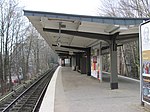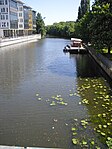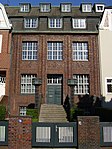St. Matthew's Church, Hamburg
20th-century Lutheran churches in GermanyBuildings and structures in Hamburg-NordGerman church stubsHamburg building and structure stubsLutheran churches in Hamburg

St. Matthew's Church (German: Matthäuskirche) in Winterhude, Hamburg, is a brick Lutheran church built from 1910 to 1912 in the baroque style. The church is adorned with the colorful windows of Charles Crodel, who also made the stained-glass windows for the main church of St. James's and for St. Mary's Church in Fuhlsbüttel. St. Matthew's windows were created 1961 to 1971,
Excerpt from the Wikipedia article St. Matthew's Church, Hamburg (License: CC BY-SA 3.0, Authors, Images).St. Matthew's Church, Hamburg
Krohnskamp, Hamburg Winterhude (Hamburg-Nord)
Geographical coordinates (GPS) Address External links Nearby Places Show on map
Geographical coordinates (GPS)
| Latitude | Longitude |
|---|---|
| N 53.588888888889 ° | E 10.010555555556 ° |
Address
Matthäuskirche
Krohnskamp
22301 Hamburg, Winterhude (Hamburg-Nord)
Germany
Open on Google Maps










